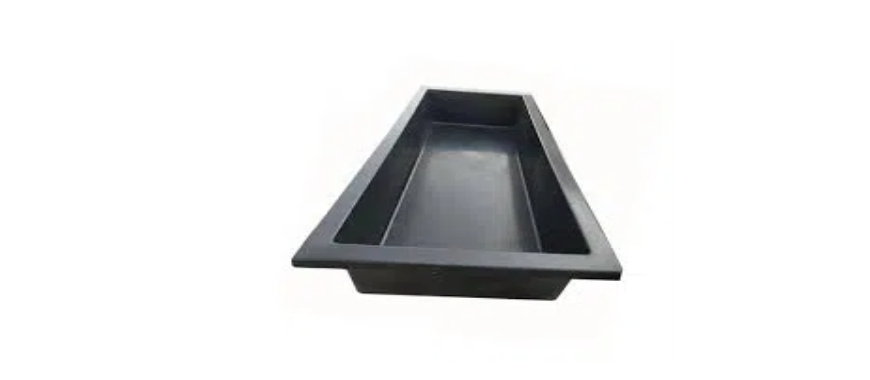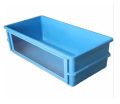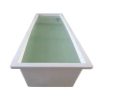
Fiberglass tub flakes are small particles that can develop in your bathing fixture. These flakes often result from mold, mildew, and bacteria buildup. They can be unsightly and may indicate deeper hygiene issues within your tub. Setting fiberglass tub flakes aside, ignoring them can lead to further damage and unpleasant odors. Regular cleaning helps prevent these flakes from forming and keeps your tub looking its best. Maintaining a clean and hygienic environment is essential for both aesthetics and health. Addressing fiberglass tub flakes promptly ensures a more enjoyable bathing experience and prolongs the life of your tub. By understanding their causes, you can take proactive steps to minimize their occurrence.
What Causes Fiberglass Tub Flakes?
Understanding the factors that lead to fiberglass tub flakes is essential for effective prevention. These flakes often stem from various sources and conditions that promote their growth. Identifying these causes can help you maintain a clean and functional tub.
Common Sources of Fiberglass Tub Flakes
Fiberglass tub flakes arise from several common sources:
- Mold and Mildew: These fungi thrive in damp environments, making tubs a perfect breeding ground. Mold can spread quickly, causing black or brown flakes to appear.
- Bacterial Growth: Bacteria feed on organic matter, including soap residues and body oils. This growth can lead to unsightly flakes and odors.
- Soaps and Oils: Many bathing products contain oils and fragrances. When these products accumulate, they can contribute to the formation of fiberglass tub flakes.
- Human Skin: Skin particles naturally shed during bathing. These can mix with soap and oils, promoting bacterial growth and the appearance of flakes.
- Water Quality: Hard water contains minerals that can deposit in your tub. Over time, these minerals can contribute to the flaking issue.
Addressing these sources is crucial for maintaining tub hygiene and appearance. Regular cleaning can help minimize their impact.
Conditions That Promote Flaking
Certain conditions can create an environment conducive to fiberglass tub flakes:
- Stagnant Water: When water remains in the tub or its jets, it provides a habitat for bacteria and mold. This stagnation can accelerate flake formation.
- Inadequate Cleaning: Failing to clean your tub regularly allows residues to build up. This buildup can lead to more extensive flaking over time.
- Humidity Levels: High humidity in bathrooms can exacerbate mold and mildew growth. Proper ventilation is essential to control moisture levels.
- Temperature Fluctuations: Changes in temperature can affect water quality and promote bacterial growth. Maintaining a stable temperature can help prevent this.
- Poor Maintenance: Neglecting to inspect your tub regularly can allow minor issues to escalate. This oversight can lead to significant problems, including fiberglass tub flakes.
By understanding these factors, you can take proactive measures to prevent the formation of fiberglass tub flakes. Regular maintenance and attention to cleaning practices can significantly reduce their occurrence. This knowledge empowers you to create a healthier bathing environment.
Effective Ways to Remove Hard Deposits from Fiberglass Tub
Best Practices for Prevention of Fiberglass Tub Flakes
Preventing fiberglass tub flakes requires a proactive approach. By implementing best practices for maintenance, you can significantly reduce the occurrence of these unsightly particles. Regular cleaning and effective techniques are essential in achieving a clean and hygienic tub environment.
Regular Cleaning Routine
Establishing a consistent cleaning routine is vital for preventing fiberglass tub flakes. Consider the following recommendations:
- Frequency of Cleaning: Clean your tub after each use to minimize residue buildup. If daily cleaning is not feasible, aim for a thorough cleaning at least once a month.
- Immediate Attention: Wipe down surfaces immediately after use to prevent soap scum and oils from settling.
- Homemade Cleaners: Simple homemade cleaners can be effective. A mixture of vinegar and baking soda can clean and deodorize your tub. This solution is safe and eco-friendly.
- Commercial Cleaners: Many commercial cleaners specifically target mold and mildew. Ensure these products are safe for fiberglass surfaces to avoid damage.
- Specialized Fiberglass Cleaners: Look for products designed for fiberglass tubs. These cleaners often contain ingredients that tackle stubborn stains and prevent flakes.
By following a regular cleaning routine, you can effectively combat the formation of fiberglass tub flakes. Keeping your tub clean enhances its appearance and prolongs its lifespan.
Recommended Cleaning Process
A step-by-step cleaning process ensures thorough maintenance of your fiberglass tub. Follow these guidelines to keep your tub free of flakes:
- Filling the Tub: Start by filling the tub with hot water. The water level should rise two inches above the highest jet if applicable. Hot water helps dissolve soap scum and oils.
- Adding Cleaner: Add a half gallon of distilled white vinegar to the water. Vinegar is a natural disinfectant and can break down stubborn residues.
- Running the Jets: If your tub has jets, run them for about 15 minutes. This step circulates the cleaning solution, ensuring it reaches all areas, including hidden spots.
- Pause and Let It Sit: Allow the mixture to sit for about 10 minutes. This pause gives the vinegar time to work on any buildup.
- Draining the Tub: Drain the tub completely after the cleaning cycle. Make sure to remove any visible flakes or residues that may have been dislodged.
- Refilling with Cold Water: Refill the tub with cold water and run the jets again for about 10 minutes. This step helps flush out any remaining cleaner and debris.
- Final Wipe Down: After draining the water, use a clean, soft cloth to wipe down all surfaces. This final touch ensures that no water spots or residues are left behind.
By following this recommended cleaning process, you can significantly reduce the risk of fiberglass tub flakes forming. Regular cleaning not only enhances hygiene but also contributes to the longevity of your tub.
Implementing these best practices for prevention will help maintain a clean fiberglass tub. Regular cleaning and effective processes are key to reducing fiberglass tub flakes. By taking the time to care for your tub, you can enjoy a beautiful and functional bathing space for years to come.
Dealing with Existing Fiberglass Tub Flakes
When fiberglass tub flakes become noticeable, it’s important to address them promptly. Ignoring the problem can lead to larger issues over time. Understanding the severity of the situation and knowing effective cleaning methods can help restore your tub to its original condition.
Identifying the Severity of the Issue
Recognizing the severity of fiberglass tub flakes is essential for proper maintenance. Consider the following signs:
- Surface Flakes vs. Deep Damage: Small, superficial flakes may indicate minor buildup. Larger or persistent flakes can signal deeper issues.
- Color Changes: Noticeable color changes, such as a fiberglass tub discolored by mold or mildew, may indicate growth on the surface. If not addressed, this can lead to more extensive flaking.
- Odors: Foul odors often indicate bacterial growth. This is a strong sign that professional cleaning may be needed.
- Frequent Flaking: If you notice flakes appearing frequently, this could suggest an underlying maintenance issue.
- Visible Mold or Mildew: Presence of mold or mildew may indicate a need for immediate attention. These substances can contribute to the flaking problem.
If any of these signs are present, it might be time to consider professional cleaning services. Professionals can provide a thorough cleaning and identify issues that may not be visible. Their expertise can prevent future flaking and maintain your tub’s integrity.
DIY Cleaning Tips
If you prefer to tackle fiberglass tub flakes yourself, several effective methods can help. Here are some tips and recipes for homemade cleaners:
- Vinegar and Baking Soda Solution: Combine equal parts of vinegar and baking soda to create a paste. Apply this mixture to affected areas and let it sit for 15 minutes. Rinse with hot water to remove flakes.
- Lemon Juice and Baking Soda: Mix lemon juice with baking soda for a natural scrub. The acidity of lemon helps break down residue while providing a fresh scent.
- Dish Soap Solution: Combine warm water with a few drops of dish soap. Use a soft sponge to scrub the tub gently. This method is effective for routine cleaning.
- Borax Scrub: Mix borax with water to form a paste. Apply it to stubborn spots and scrub gently. Rinse thoroughly afterward.
In addition to these recipes, consider the following techniques to remove stubborn fiberglass tub flakes:
- Soft-Bristle Brush: Use a soft-bristle brush to gently scrub areas with buildup. Avoid using abrasive materials, as they can scratch the fiberglass.
- Steam Cleaning: If possible, use a steam cleaner to loosen debris. This method can help eliminate deep-seated dirt and grime without harsh chemicals.
- Regular Maintenance: Establish a regular cleaning schedule to prevent future flakes and buildup. Consistent care will keep both your fiberglass tub and surround looking fresh and well-maintained..
Dealing with existing fiberglass tub flakes requires prompt action and effective cleaning strategies. By identifying the severity of the issue, you can decide whether to tackle it yourself or seek professional help. Implementing DIY cleaning tips can significantly reduce flakes and restore your tub’s beauty. Regular maintenance remains key to preventing further problems, ensuring your fiberglass tub remains a relaxing and enjoyable space.
Effective Ways to Remove Mineral Build Up in Fiberglass Tub
Refinishing Options for Fiberglass Tubs
Refinishing fiberglass tubs is a practical solution for dealing with fiberglass tub flakes and restoring their original beauty. Over time, tubs may develop surface damage, stains, or flakes, making refinishing an attractive option. A fiberglass tub makeover through refinishing can not only improve the tub’s appearance but also restore its functionality. Understanding the available refinishing methods can help you make an informed choice.
Understanding Fiberglass Bathtub Refinishing
Refinishing kits are widely available for fiberglass tubs. These kits typically include everything you need for a DIY project, such as:
- Epoxy Paints: These paints create a durable surface that resists future flaking.
- Adhesives: Strong adhesives ensure the new finish adheres well to the fiberglass.
- Application Tools: Most kits provide brushes, rollers, and sprays for easy application.
The benefits of using refinishing kits include:
- Cost-Effective Solution: Refinishing is often less expensive than replacing the entire tub.
- Quick Process: Most refinishing jobs can be completed in a few hours, allowing for fast use of the tub again.
- Variety of Finishes: Kits offer different colors and finishes to match your bathroom decor.
Refinishing becomes necessary under certain conditions:
- Visible Damage: When you notice significant scratches or chips, refinishing can restore the tub’s appearance.
- Persistent Flakes: If fiberglass tub flakes continue to appear despite regular cleaning, refinishing may be the best option.
- Fading Colors: A dull or faded surface can be revitalized with a fresh coat of finish.
Professional vs DIY Refinishing
When considering refinishing your fiberglass tub, you can choose between professional services or a DIY approach. Below is a comparison of the pros and cons of each option.
| Criteria | Professional Refinishing | DIY Refinishing |
|---|---|---|
| Cost | Typically higher due to labor and expertise. | Lower cost for materials but may need more time. |
| Skill Level | Requires no skill; experts handle the job. | Requires some skill and knowledge for best results. |
| Time | Completed in a few hours by professionals. | Takes longer, depending on experience and preparation. |
| Quality of Finish | High-quality finish guaranteed by professionals. | Quality depends on skill; may not match professional results. |
| Warranty | Often comes with a warranty on workmanship. | Generally no warranty unless specified with products. |
| Convenience | Hassle-free; professionals manage everything. | Requires planning and effort to complete the job. |
| Customization | Limited options; typically standardized finishes. | Offers freedom to choose colors and techniques. |
Choosing between professional and DIY refinishing depends on your comfort level and budget. If you have the skills and time, a DIY approach can save money. However, hiring professionals guarantees a high-quality finish, especially if the damage is extensive.
Refinishing options for fiberglass tubs provide a viable solution for dealing with fiberglass tub flakes. Understanding the benefits and processes involved can help you choose the best approach. Whether you opt for professional help or decide to tackle it yourself, refinishing can restore your tub’s beauty and prolong its lifespan. Taking action promptly will ensure your bathing space remains inviting and enjoyable.
Turning Your Fiberglass Tub Into a Tiled Shower: A Guide
Final Thoughts on Fiberglass Tub Flakes
At GangLong Fiberglass, we understand the significance of maintaining a pristine tub. Addressing fiberglass tub flakes is crucial for both aesthetics and hygiene. Over time, neglecting this issue can lead to more serious problems, such as mold and bacteria buildup. Our commitment is to help you enjoy a clean and beautiful bathing experience.
GangLong Fiberglass
We encourage everyone to adopt a regular cleaning schedule. This practice not only minimizes the appearance of fiberglass tub flakes but also prolongs the life of your tub. By investing time in maintenance, you can prevent extensive repairs and ensure your tub remains inviting and safe.
At GangLong Fiberglass, we are dedicated to enhancing your bathing experience with our range of high-quality products. In addition to specialized cleaning solutions and refinishing kits for addressing fiberglass tub flakes, we also offer a variety of other fiberglass products, including fiberglass fabrics, fiberglass sheets, and grating. Designed for durability and performance, these products ensure that your home environment remains both functional and aesthetically pleasing.
From specialized cleaning solutions to refinishing kits, our brand is dedicated to enhancing your bathing experience. Remember, a well-maintained tub contributes to a healthier home environment and a more enjoyable bathing routine. Embrace the care of your fiberglass tub, and it will reward you with lasting beauty and functionality.
FAQs about Fiberglass Tub Flakes
The black flakes in your jetted tub are often a mixture of mold, mildew, and bacteria. These particles can also include human skin, oils, and soap residues. Stagnant water in the jets provides an ideal environment for these substances to grow. Regular cleaning is essential to prevent this buildup. Consider running a cleaning cycle with vinegar and water to reduce black flakes. If the problem persists, further investigation into the plumbing may be necessary.
White flakes in your bathtub may result from mineral deposits, soap scum, or leftover cleaning products. Hard water is often a primary cause of mineral deposits. Soap residue can accumulate over time, especially if regular cleaning is neglected. To manage white flakes, try using a vinegar solution to dissolve the buildup. Ensure that your cleaning routine includes thorough rinsing to remove any product residues.
White flakes floating in your hot tub could indicate a combination of chemical imbalances and residue. These flakes may come from body oils, soaps, or even the hot tub’s materials. Proper water balance is crucial for preventing these flakes. Regularly check pH levels and sanitizer levels to maintain water quality. Running your filtration system frequently will also help capture floating debris. If flakes continue to appear, consider draining and cleaning the tub.
Black specks in your bathtub that smear are likely caused by mold or mildew. These specks may mix with soap and oils, creating a smudgy residue. Mold thrives in damp areas, especially if the tub is not cleaned regularly. To address this issue, clean your tub with a mixture of vinegar and baking soda. Allow the solution to sit for a few minutes before scrubbing. Regular maintenance is key to preventing mold from returning and to keep your tub clean and safe.

As the editor of GangLong Fiberglass, I have years of experience and in-depth research, focusing on cable tray products, fiberglass solutions, and grille systems. I incorporate years of industry insights and practical experience into every content, committed to promoting the progress of the industry. At GangLong Fiberglass, my commitment is reflected in every product, from innovative cable trays to durable fiberglass solutions and sturdy grille systems. As an authoritative voice in the industry, my goal is to provide valuable information to professionals and businesses and promote forward-looking solutions.


